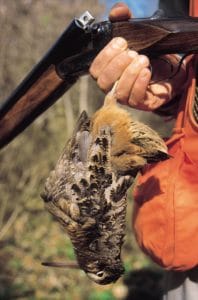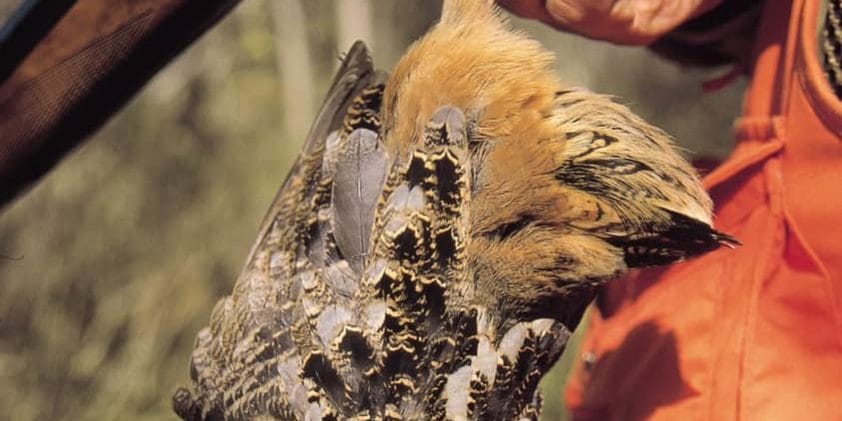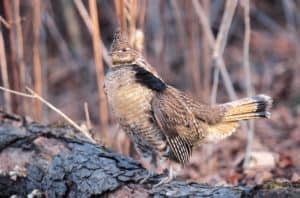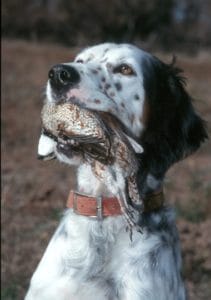by M.D. Johnson
Sure, every hunter who has been around a season or two has heard about giant Iowa whitetails and Rio Grande gobblers from Texas. They know about the incredible goose hunting in Saskatchewan, archery elk in Colorado, and black bears in Maine.

Upland bird hunting may not be as popular among hunters as it was a few decades ago, but hunters who don’t at least try challenging bird hunting are missing out.
However, there are many hunters, and it’s unfortunate, who don’t know of the fantastic upland bird hunting to be had throughout much of this great country of ours. A goodly portion of this upland bird hunting can be enjoyed — free of charge — on state and federal land.
So grab your vest, shoulder that lightweight Over/Under, and kennel the black lab, Springer or Brittany. Here are some great options for getting out and enjoying some of the best bird hunting in the United States.
SOUTH DAKOTA PHEASANTS
Season: Oct. 17, 2015 – Jan. 3, 2016; Agency website: gfp.sd.gov
To be perfectly honest, I absolutely love South Dakota. The people are wonderful, the beef is second to none — and I do like a good steak — and the walleye fishing within eyesight of the capitol building in Pierre is top-notch. But it’s the pheasant hunting that brings outdoorsmen from around the country to the uplands of The Sunflower State, and believe you me, the pheasant hunting well worth the trip to South Dakota.
Roughly speaking, the best pheasant hunting in South Dakota can be found in the eastern half of the state. And while some will argue, that best half can be downsized even further into the northeastern third. Here, both excellent pheasant cover, much in the form of marshy cattail-studded wetlands known as Waterfowl Production Areas (WPA), and acres upon acres of public access provides more-than-ample opportunity for groups and soloists alike. A word of warning. These WPAs can be thick and rough going, especially during the late season when snow often complicates even the simplest things, like walking. Now, a strong brush-busting black lab can prove a tremendous asset, both in finding birds and then persuading these long-legged runners into the air.
The city of Aberdeen caters to tens of thousands of pheasant hunters each fall, as do most of the cities, towns, and villages in eastern South Dakota come late October. Essentially, it’s tough to find a place that’s not hunter-friendly — and that’s what’s great about South Dakota.
MAINE RUFFED GROUSE AND WOODCOCK
Season: Oct. 1, 2015 – Dec. 31, 2015; Agency website: maine.gov/ifw
In early November, southern Maine, or the area to which the natives refer to as Down East, is like something out of an Ansel Adams photography. Only this image, in brilliant contrast to Adams’ namesake monochromatic portrayal of Mother Nature, is all about colors. Southern Maine is yellows and reds, orange with a tinge of fading green.
There’s brown there, too. A deep cocoa color, mottled with blacks and whites, feathered garb that can speak of only one creature — the king of upland game birds, the ruffed grouse. And let’s not forget the ruff’s frequent companion, the mysterious timberdoodle, perhaps better known traditionally as the woodcock. Ruffs and ‘doodles will often share the same forested upland habitat, a wonderfully scenic albeit shot-challenging mix of young alders, pines, and other timbers sprinkled liberally among reverting pastures, forgotten frontier homesteads, and soggy marshlands.
Fortunately for avid bird hunters, there’s plenty of such habitat available and much open to the general hunting public. The last time I was Down East, I spent three very enjoyable days with Doug Teel, owner of Northridge Outfitters (northridgeoutfitters.com), hunting ruffs and woodcock, all on well-managed and quite productive state land. In addition to upland birds, Teel also offers snowshoe hare hunts over beagles. If you haven’t done it, you most certainly should try it.
NEBRASKA PRAIRIE CHICKENS
Season: Sept. 1, 2015 – Jan. 31, 2016; Agency website: outdoornebraska.ne.gov/hunting
When I first looked out over the Sandhills in northern Nebraska, my thought was, “How could anything live out here in all this…well, nothingness?” It’s wasn’t long before I discovered the ‘Hills are full, and quite literally, with an incredible array of wildlife, including, among other things, one of my personal favorite upland birds, the prairie chicken.
Chickens, like their cousin, the sharptail grouse, scratch out a comfortable living in what appears to be an extremely inhospitable place. Covering roughly 20,000 square miles in the northern and western portions of Nebraska, the Sandhills is a mix of dunes, cottonwoods, small ponds and lakes, and miles upon miles of native grasses. Used today primarily for grazing cattle, the Sandhills offer some of the most exciting — and challenging — hunting to be found in the U.S.
Hunting prairie chickens isn’t for the weak of leg or lung. Flushed, prairie chickens have a tendency to fly out of sight, making follow-up opportunities more often than not a “way over there” sort of proposition. As there’s often a lot of walking involved. Lightweight 12-bores filled with 1-1/4- to 1-1/2-ounce loads of No. 5 or No. 6 shot are preferred; so, too, are physically fit canine assistants capable of working close. For a true taste of the still-wild West, complete with some fantastic prairie chicken hunting, the Rhoades Family at Uncle Buck’s Lodge in Brewster (unclebuckslodge.com) certainly know how to set a table.
KANSAS BOBWHITE QUAIL
Season: Nov. 14, 2015 – Jan. 31, 2016; Agency website – ksoutdoors.com/hunting
Few things in the upland birder’s world say tradition as perfectly does the handsome bobwhite quail. Unfortunately, bobwhite numbers are taken a turn for the not-so-good over much of their original range in recent decades. However, ‘gunners can still find plenty of opportunity in Kansas.
Although Mister Bobwhite can be found throughout Kansas, much of the best hunting takes place in the eastern third of the state. Here, hunters will find thousands of acres open to the outdoor public, all enrolled in Kansas’ innovative Walk-In Hunting Access (WIHA) program.
Under this program, the state fish and game agency works in conjunction with private landowners to make those privately held properties accessible to hunters during certain times of the year and with specific, albeit few restrictions.
For more information and complete maps of the WIHA holdings, visit the agency’s website and search “2015 Fall Hunting Atlas.”
MONTANA SHARPTAILS
Season – Sept. 1, 2015 – Jan. 1, 2016; Agency website: fwp.mt.gov/hunting
For something really exciting, pack the pointer in the truck, throw a couple sets of well-worn hunting boots in the duffle, and turn the headlights toward eastern Montana and a date with some Big Sky Country sharptail grouse. A second cousin to the prairie chicken, sharptails are strong-flying, often-fickle creatures, exploding from underfoot one moment, and flushing hundreds of yards off the next. The frustration, however, is worth it once birds are brought to hand. Sharptail, at least to me, is some of the finest table fare in the avian world.
Eastern Montana offers plenty of public access in the form of state and federal (Bureau of Land Management/BLM) properties. Similar to Kansas’ WIHA Program, Montana boasts its own version known as Block Management Areas, where hunters can find private lands under agreement with the state, which provide hunting opportunities for not only upland birds, but big game, turkeys, and waterfowl as well. A complete listing of BMA properties can be found on the agency’s website.
The Union Sportsmen’s Alliance website is designed to provide valuable articles about hunting, fishing and conservation for members of AFL-CIO affiliated labor unions and all sportsmen and sportswomen who appreciate hunting and fishing and want to preserve our outdoor heritage for future generations. If you would like your own story and experience from the outdoors to be considered for our website, please email us at [email protected].










